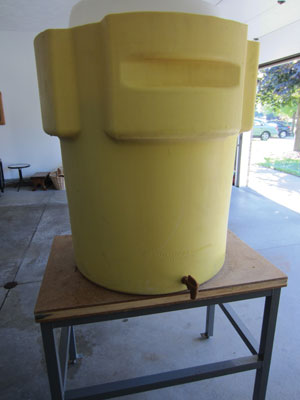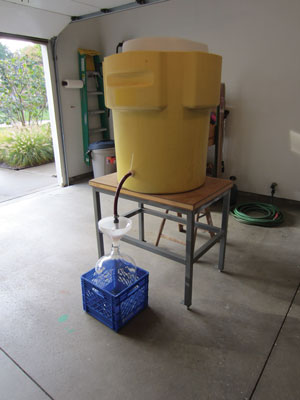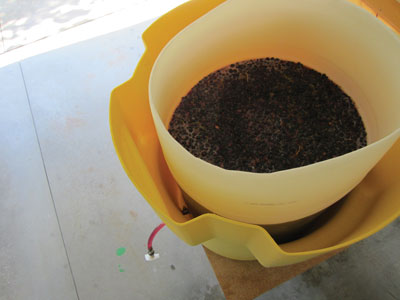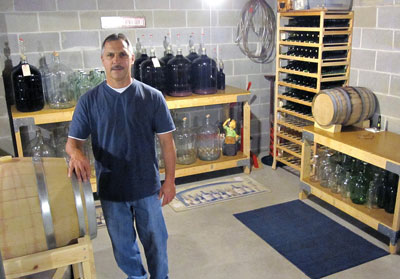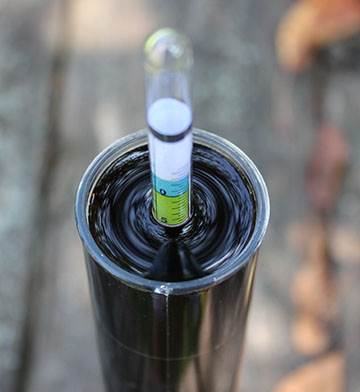One of the biggest challenges as a home winemaker has been controlling must fermentation temperatures. About three years ago, I came up with a simple and effective solution. I can very accurately control my fermentation temperature to within 2 degrees (Fahrenheit) of my target temperature.
First, I started with a 55-gallon (208-L), food-grade, plastic drum for my must. (Twelve 36-pound/16 kg boxes of grapes fit quite well.) I then attached a plastic hose, using a plastic 3⁄4-inch tapered thread adaptor about 6 inches (15 cm) up from the bottom of the drum. I also installed a simple plastic shut-off valve on the opposite end of the hose, which allows me to easily rack off most of the “free-run” juice into carboys, leaving the pulp and skins behind for pressing. Next, I purchased a 95-gallon (360-L), plastic salvage drum that I use as a water-jacket for cooling or heating. (Make sure your salvage drum is new or has never been used for any type of chemicals.) I then added a 3⁄4-inch taper-threaded hole on one side of the salvage drum to install a shut-off valve to drain the water when needed. On the opposite side of the drum, I cut a hole for the plastic hose to access the free-run juice. The trick here is to seal the hose as it goes through the salvage drum so it doesn’t allow the water jacket to leak out. I solved this with a large rubber stopper from a local wine supply shop that was large enough to accommodate a hole in the center for the plastic hose to go through. If you build a similar setup, you will need to drill the appropriate hole diameter in the stopper. Tip: Freeze the stopper first so that it is firm enough to drill a hole through. Also, the hole in the salvage drum should be sized to fit the outside diameter of the stopper so that it seals properly. The rubber stoppers are tapered on the outside and should be installed inside the drum so water pressure will not push it out.
Next, I placed the 55-gallon (208-L) drum inside the 95-gallon (360-L) drum. I installed the water drain valve on one side and connected the hose and rubber stopper on the other, then test for leaks. If there are leaks between the hose and rubber stopper, a simple radiator style clamp around the stopper does the trick. After testing, I like to place both drums on a good, stable bench that is high enough to place my carboys under to take advantage of simple gravity flow for the free-run. After the inner drum is full of crushed grapes, fill the outer jacket with cool or warm water to adjust the must temperature accordingly. I fill it with cold, tap water and add one small bag of ice each day for the length of time I want to do a cold soak prior to fermentation. After cold soak, I drain the water and pitch the yeast when the must is warm enough. Warm water can be used as well. One thing to remember when filling the water jacket: The laws of buoyancy apply. In other words, eventually the inner drum will begin to float when too much water is added, depending on how many pounds of grapes are in the inner drum.
